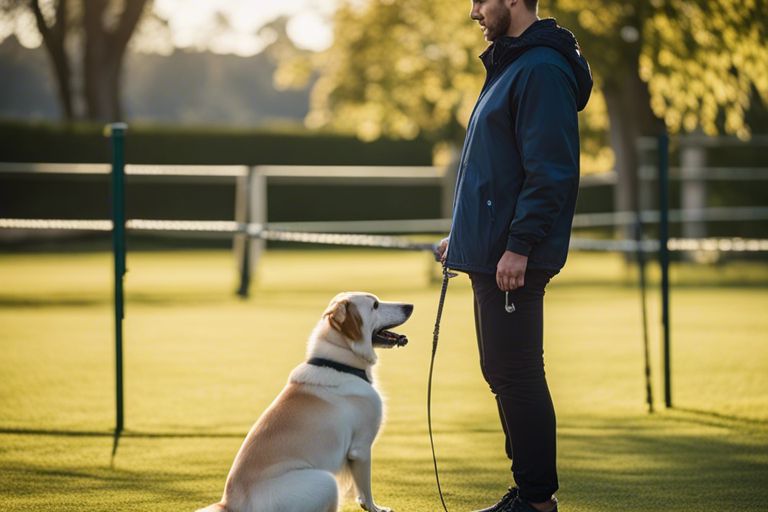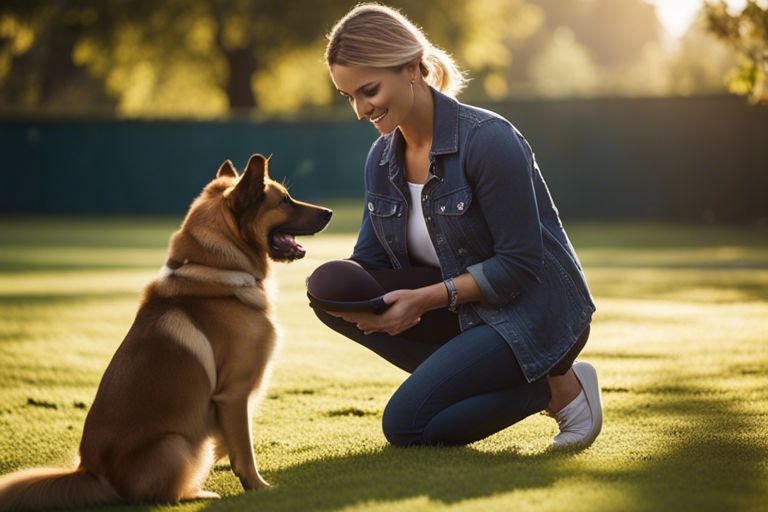Training your dog is not just about teaching them tricks; it’s about establishing a bond built on trust, respect, and communication. In this blog post, we will investigate into expert tips and techniques to help you train your furry friend like a pro. From mastering basic commands to addressing behavior issues, we will guide you through the process of achieving canine obedience with confidence and success. Whether you’re a first-time dog owner or looking to fine-tune your training skills, these tips will equip you with the tools to bring out the best in your canine companion.

Key Takeaways:
- Building a Strong Bond: Developing a strong bond with your dog through positive reinforcement and consistent training will foster obedience and trust.
- Consistency is Key: Maintaining a consistent training routine and using the same commands will help your dog understand what is expected of them.
- Patience and Persistence: Training your dog takes time, so be patient and persistent in your efforts. Celebrate small victories and stay committed to achieving desired behaviors.
Preparing for Training
Choosing the Right Training Environment
One of the key components of successful dog training is selecting the appropriate training environment. Choose a quiet, distraction-free location where your dog can focus on the training session. This could be a room in your home, a fenced backyard, or a local park with minimal foot traffic. By setting the stage for success with the right environment, you are helping your dog stay engaged and attentive during training.
Ensuring You Have the Necessary Tools and Treats
One important aspect of preparing for training is making sure you have the right tools and treats on hand. Invest in a well-fitting collar or harness and a sturdy leash to maintain control during training sessions. Additionally, have high-value treats that your dog finds irresistible to use as rewards for good behavior. Treats such as small pieces of cooked chicken or freeze-dried liver can be effective motivators during training.
Tools: Having the right training tools such as a clicker or a whistle can also aid in communication with your dog. These tools can help mark desired behaviors instantly, making it easier for your dog to understand what you are asking for. Furthermore, having a treat pouch or a designated container to hold treats will ensure easy access and quick reinforcement of good behavior.
Basic Obedience Techniques
Teaching Sit, Stay, and Come Commands
One of the fundamental obedience commands every dog should learn are the sit, stay, and come commands. Teaching these commands requires consistency, patience, and positive reinforcement. Start by teaching your dog to sit on command, rewarding them with treats and praise. Once they have mastered sitting, move on to teaching them to stay and come when called. Use a leash and gradually increase distance to practice these commands in different environments.
Mastering Leash Training and Proper Walking
Leash training is crucial for a well-behaved dog. Start by introducing your dog to the leash gradually, allowing them to get used to wearing it before going on walks. Use positive reinforcement to encourage good behavior while walking, such as walking beside you without pulling. It’s vital to maintain a consistent pace and reward your dog for following commands.
Another important aspect of mastering leash training is teaching your dog to focus on you as the leader during walks. Allow your dog to explore their surroundings, but always maintain control of the leash to prevent pulling or distractions. Consistent training and positive reinforcement will help your dog become a well-behaved walking companion.
Addressing Behavioral Challenges
Dealing with Barking and Digging
All dog owners have faced the frustration of incessant barking and relentless digging at some point. If your dog exhibits these behaviors, it’s crucial to address the root cause. Barking can be a sign of boredom, anxiety, or territorial behavior, while digging is often a result of instinctual tendencies or seeking attention. To tackle barking, provide mental and physical stimulation through regular exercise and interactive toys. For digging, designate a specific area in your yard for your dog to dig, and redirect their attention to that spot with positive reinforcement.
Tips for Curbing Biting and Aggression
Aggression and biting are serious behavior issues that require immediate attention. If your dog displays signs of aggression, such as growling, snapping, or biting, seek professional help from a certified trainer or behaviorist. In the meantime, avoid triggering situations and practice positive reinforcement techniques to encourage good behavior. Never punish aggression with physical force, as it can escalate the problem.
- Consistency in training methods is key to addressing biting and aggression.
- Provide plenty of socialization opportunities to help your dog feel more secure.
Challenges such as barking, digging, biting, and aggression can be common hurdles in dog training. By addressing these behaviors early on with patience, consistency, and positive reinforcement, you can help your dog become a well-behaved and balanced companion. Remember that every dog is unique, so tailor your training approach to suit your dog’s individual needs and personality.
Advancing Your Training Regimen
Once again, as you and your furry companion master the basics of obedience training, it’s time to take your training regimen to the next level by introducing tricks and advanced commands. This not only challenges your dog mentally but also strengthens your bond through continued communication and trust.
Introducing Tricks and Advanced Commands
- Regimen
| Trick | Description |
| Roll Over | Teach your dog to roll over on command, a fun and impressive trick. |
| Play Dead | Train your dog to play dead when you say the cue, a crowd-pleasing trick. |
Factors That Affect Training Progression
- Progression
Progressing in your dog’s training journey can be influenced by various factors that affect their ability to learn and retain new skills. Factors such as age, breed, temperament, and consistency in training play a crucial role in determining the pace at which your dog picks up advanced commands and tricks. Thou, understanding these factors can help tailor your training approach to suit your dog’s individual needs and optimize their learning potential.
Affect
Some dogs may excel in learning new tricks quickly due to their breed’s inherent traits or natural intelligence, while others may require more time and patience to grasp complex commands. Environmental distractions, health issues, and stress levels can also Thou impact your dog’s focus and receptiveness during training sessions. By recognizing and addressing these factors, you can create a conducive learning environment that sets your furry friend up for success in their training progression.
Maintaining Consistency and Patience
Developing a Regular Training Schedule
After bringing a new furry friend into your home, it’s imperative to establish a regular training schedule. Consistency is key when teaching your dog commands and behaviors. Set aside time each day for training sessions, keeping them short and engaging to maintain your dog’s interest.
The Role of Positive Reinforcement and Rewards
Little by little, your dog will respond to positive reinforcement and rewards. Use treats, praise, and toys to reinforce good behavior and encourage your pup to repeat it. Show excitement and joy when your dog obeys a command correctly, creating a positive association with learning and training.
Schedule regular training sessions to reinforce positive behaviors and gradually introduce new commands. Consistency is key in building a strong foundation of obedience in your canine companion. Note, patience and persistence are imperative in training your dog effectively.
Summing up
Presently, mastering canine obedience is an attainable goal with the right approach and consistency. By implementing positive reinforcement techniques, understanding your dog’s needs, and providing clear communication, you can train your dog like a professional. Remember to be patient and consistent in your training efforts, as this will lead to a well-behaved and happy canine companion. With dedication and the tips outlined in this guide, you can achieve successful training results and strengthen the bond between you and your dog.
FAQ
Q: Why is dog training important?
A: Dog training is important for a number of reasons. It allows you to establish a bond with your dog based on trust and communication. Training also helps prevent behavioral issues and ensures your dog’s safety and the safety of others.
Q: What are the basic obedience commands every dog should know?
A: Every dog should learn basic obedience commands such as Sit, Stay, Come, Heel, and Down. These commands form the foundation for good behavior and can help keep your dog safe in various situations.
Q: How can I train my dog like a pro?
A: To train your dog like a pro, consistency, patience, and positive reinforcement are key. Set clear expectations, use rewards effectively, and practice regular training sessions. If needed, seek guidance from a professional dog trainer for specialized training techniques.

